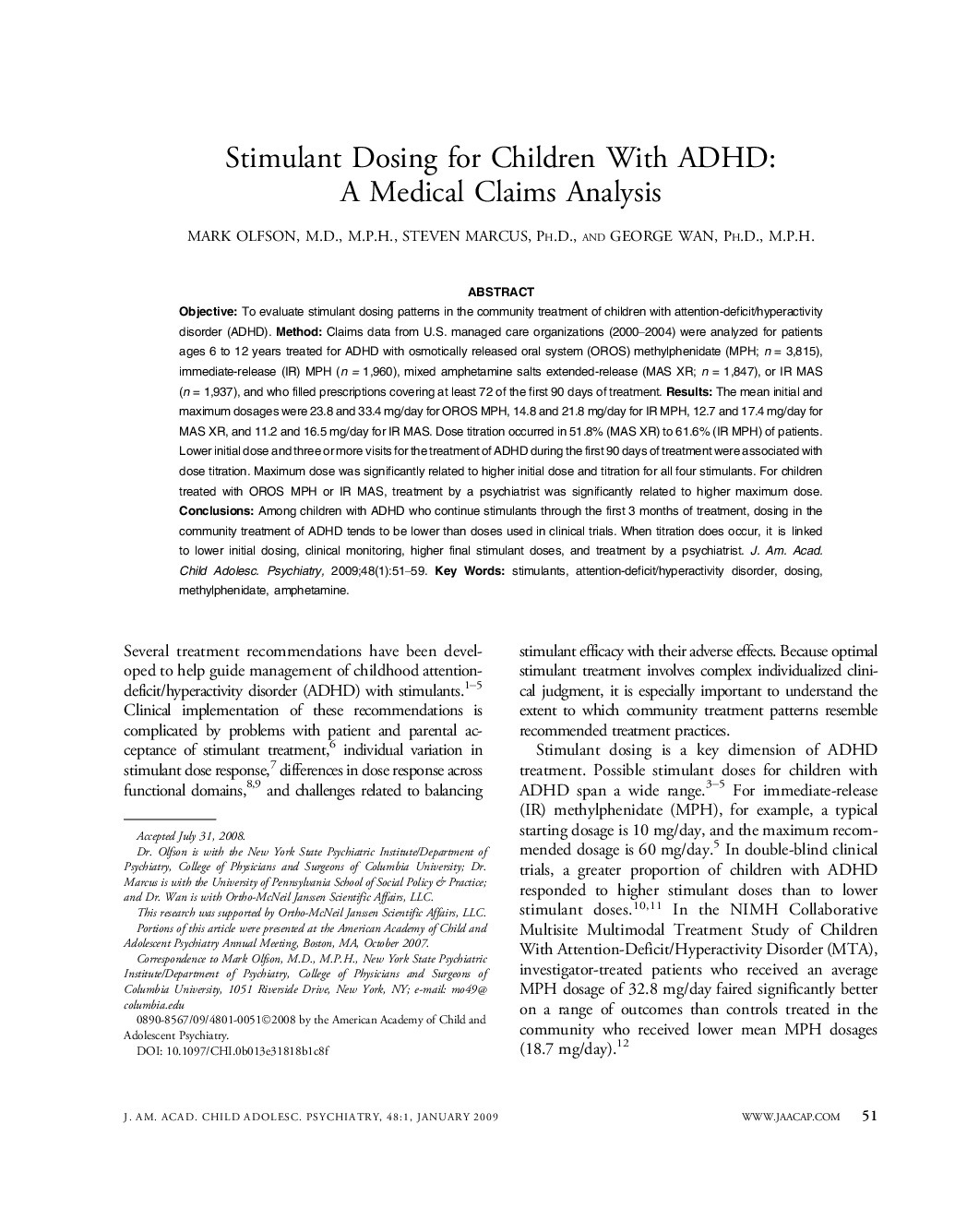| Article ID | Journal | Published Year | Pages | File Type |
|---|---|---|---|---|
| 324848 | Journal of the American Academy of Child & Adolescent Psychiatry | 2009 | 9 Pages |
ObjectiveTo evaluate stimulant dosing patterns in the community treatment of children with attention-deficit/hyperactivity disorder (ADHD).MethodsClaims data from U.S. managed care organizations (2000–2004) were analyzed for patients ages 6 to 12 years treated for ADHD with osmotically released oral system (OROS) methylphenidate (MPH; n = 3,815), immediate-release (IR) MPH (n = 1,960), mixed amphetamine salts extended-release (MAS XR; n = 1,847), or IR MAS (n = 1,937), and who filled prescriptions covering at least 72 of the first 90 days of treatment.ResultsThe mean initial and maximum dosages were 23.8 and 33.4 mg/day for OROS MPH, 14.8 and 21.8 mg/day for IR MPH, 12.7 and 17.4 mg/day for MAS XR, and 11.2 and 16.5 mg/day for IR MAS. Dose titration occurred in 51.8% (MAS XR) to 61.6% (IR MPH) of patients. Lower initial dose and three or more visits for the treatment of ADHD during the first 90 days of treatment were associated with dose titration. Maximum dose was significantly related to higher initial dose and titration for all four stimulants. For children treated with OROS MPH or IR MAS, treatment by a psychiatrist was significantly related to higher maximum dose.ConclusionsAmong children with ADHD who continue stimulants through the first 3 months of treatment, dosing in the community treatment of ADHD tends to be lower than doses used in clinical trials. When titration does occur, it is linked to lower initial dosing, clinical monitoring, higher final stimulant doses, and treatment by a psychiatrist.
